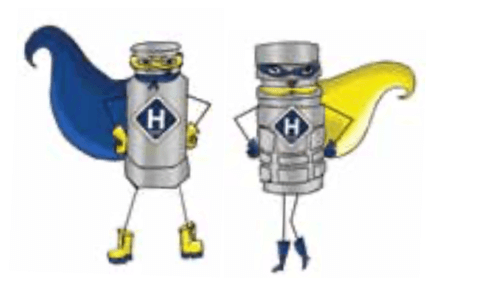For the care and operation of Holmbury couplings
Holmbury couplings have established an excellent track record since their introduction in 1982. If used correctly they will give lengthy, trouble-free service. Where problems have been experienced with Holmbury couplings and returned for examination, the most common causes were found to be dirt, neglect and abuse. These guidelines are intended to help maximize the operating life of Holmbury couplings.

• ALWAYS wipe the two mating faces clean before
connecting.
• ALWAYS use genuine Holmbury Dust Caps and
Plugs when the couplings are disconnected.
• ALWAYS check that pressure has been released
before connecting or disconnecting.
• ALWAYS align the external locking ball (if fitted)
with notch in the locking sleeve and then pull the
locking sleeve back fully to disconnect. Sticking is
normally caused by dirt in the coupling or physical
damage due to abuse.
• ALWAYS connect and disconnect new couplings
two or three times to work the seals. Sometimes a
new coupling will stick if the seals have not been
worked.
• ALWAYS apply the spanner or grips only to the
hexagon/flats and nowhere else when fitting
couplings.
• ALWAYS avoid damage to the coupling faces.
Burrs and scratches cause damage to the seals and
cause leaks. They can also impede connection and
disconnection of the couplings.
• ALWAYS periodically lubricate the internal locking
balls on the female half of the coupling with
silicone grease.
• ALWAYS protect your hydraulic system with a
good quality filter. Adequate filtration ensures the
oil remains free of contaminates that can damage
internal seals of couplings.

• NEVER connect and disconnect with pressure in
the line, unless the coupling type is specifically
designed to do so.
• NEVER attempt to reconnect using a damaged half
coupling as this will destroy the seals in the mating
half and necessitate replacement of both halves.
• NEVER leave the coupling where it may be run
over by a vehicle or otherwise crushed. This will
distort the sleeve and prevent connection and
disconnection.
• NEVER try to turn the sleeve when the coupling is
disconnected since this may cause the locking ball
to jam under the locking sleeve and damage the
coupling.
• NEVER try to strip a flat faced coupling down.
There are no user serviceable parts. If the coupling
is damaged it should be replaced with a new
coupling.
• NEVER hit the centre poppet of the coupling to
try and release locked in pressure. This can cause
irreparable damaged to the coupling and serious
injury. For applications with trapped in pressure
consult Holmbury.
• NEVER clamp on the sleeve of the female or nose
of the male when fitting couplings – this will cause
distortion and damage.
• NEVER subject the couplings to external forces,
especially side load. This can reduce the life of the
coupling or cause failure.
• NEVER allow hose torsional forces to act on the
couplings. Utilise Holmbury rotary couplings.
• NEVER use a coupling as a blank or pressurise
disconnected.
Since Holmbury has no control over the use and application of its products it cannot accept liability for any injury, loss or damage arising directly or indirectly from the use of its products. Information taken from this brochure is intended to serve as a guide only. Customers should, through appropriate tests, satisfy themselves that the products are suitable for their intended use.